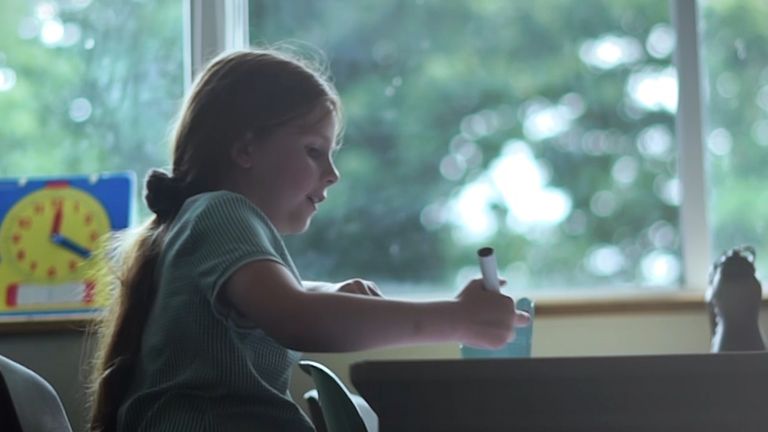Daily testing of pupils who have been exposed to COVID-19 could be just as effective as isolating groups, according to a study.
Research by the University of Oxford found that testing as an alternative to the 10-day isolation policy currently used can reduce COVID-related school absences by 39%.
Around 200 secondary schools and colleges in England took part in the trial, with one group isolating for 10 days and the other taking rapid lateral flow tests for seven days.
Researchers estimated that there were slightly fewer infections among pupils and staff when daily testing was used.
The study found that 1.5% of the contacts who did daily tests tested positive or indeterminate for COVID-19, compared to 1.6% of students and staff staying home.
Some 1.8% of school days were lost due to COVID-19 in the isolating group, while 1.5% of school days were lost in the daily testing group.
The study was sponsored by the Department of Health and Social Care and supported by the Department for Education and Office for National Statistics, and has yet to be peer reviewed.
Bernadette Young, clinical lecturer in infectious diseases at the University of Oxford and an investigator on the study, said: “By offering daily testing, you identify more of those who are truly positive and isolate specifically those who are positive, and they’re more likely to withdraw from [social] mixing and decrease the number of infectious cases present in the wider context.”
Susan Hopkins, chief medical adviser for NHS Test and Trace, said: “This is a major breakthrough, showing that daily contact testing can keep young people in classrooms instead of making them isolate at home.”
She added: “We’ve been trying to find safe alternatives, and this study gives us evidence of safe alternatives to isolation for school contacts.
“So far, self-isolation has been one of the most effective tools at our disposal against COVID-19 – stopping isolated cases from becoming major outbreaks. To have another potential tool like this is great news.”
It comes after government figures showed more than one million children in England were not in school last week for COVID-19-related reasons.
This is the equivalent of 14.3%, or around one in seven.
In recent weeks, Education Secretary Gavin Williamson said secondary schools and colleges will be asked to provide two tests to their students when the autumn term starts.
Regular home testing will continue until at least the end of September, he said.
From 16 August, children in England will only need to isolate if they have tested positive for the virus.
A government spokesperson said: “Throughout the pandemic we have followed scientific and medical advice, putting in place protective measures such as self-isolation following contact with infection to keep our schools and wider communities safe, while prioritising students’ attendance at school and college because of the benefits of face-to-face education for development and wellbeing.”













